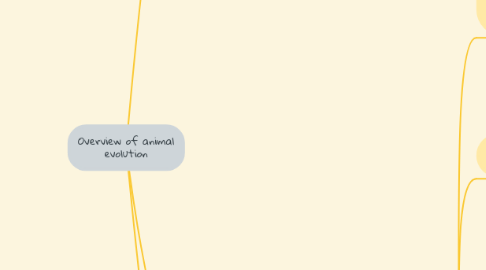
1. History of evolutionary theories.
1.1. Robert Hooke mentioned Fossil wood and living wood have identical structure.
1.1.1. Natural resources are limited.
1.2. John Ray Searched for a divine organization of species and Grouped species based on several features.
1.3. Carolus Linnaeus Provided the classification system that is still in use today.
1.3.1. Kingdom
1.3.2. Phylum
1.3.3. Class
1.3.4. Order
1.3.5. Family
1.3.6. Genus
1.3.7. Species
1.4. Chevalier de Lamarck mentioned Actions during life cause new traits in the body. And These changes are passed on to offspring.
1.5. Charles Darwin
1.5.1. Species have high potential fertility & populations should grow exponentially .
1.5.2. No two individuals are exactly the same; populations have great variability.
1.5.3. Much of this variation is heritable.
2. Hereditary and evolution.
2.1. Mental pee experiment verify the inheritable genes contains a particular trait can pass to the next generation.
2.2. Force causing evolutionary process
2.2.1. Mutation
2.2.2. Natural selection
2.2.3. Sexual Selection
2.2.4. Gene flow
2.2.5. Genetic drift
2.2.6. Descent with modification
2.2.7. Nonrandom mating
2.3. DNA
2.3.1. Important attributes of DNA.
2.3.1.1. DNA structure
2.3.1.1.1. Sugar
2.3.1.1.2. Phosphate
2.3.1.1.3. Nucleotide base
2.3.1.2. Stability
2.3.1.3. Replicability
2.3.2. What is DNA?
2.3.2.1. Traits are coded for by genes
2.3.2.2. Genes located on chromosomes.
2.3.2.3. Chromosomes are made of DNA.
2.4. What is evolution?
2.4.1. A genetic process
2.4.2. A process which takes place on the scale of a population
2.4.3. A process which takes many generations.
2.4.4. The result of evolutionary forces which produce and redistribute variation.
2.5. What is Homology?
2.5.1. Similarity due to common descent
2.5.2. Similar structure
2.5.3. May or may not show a similar function
2.6. What is Homoplasy?
2.6.1. Superficially similar, but arise by different developmental pathways.
2.6.2. Independent evolution of similar adaptations in distinct evolutionary lines (convergent evolution)
3. Why human vary geographically?
3.1. Body type
3.1.1. Human variation can be due to the four levels of adaptation.
3.1.1.1. Cultural
3.1.1.2. Developmental
3.1.1.2.1. The ability to absorb nutritions.
3.1.1.3. Acclimatization
3.1.1.3.1. Human’s body type correspond to the attitude.
3.1.1.4. Genetic
3.2. Skin color
3.2.1. Human variation also response to the solar radiation.
